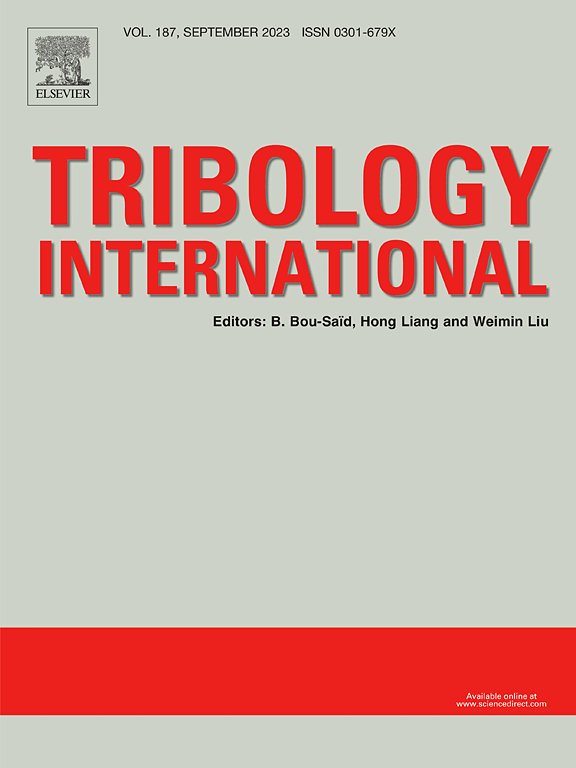粗糙表面特性及其接触行为的数值分析:PSD Vs WM函数生成自仿射分形表面
IF 6.1
1区 工程技术
Q1 ENGINEERING, MECHANICAL
引用次数: 0
摘要
众所周知,粗糙表面表现出自仿射分形。采用功率谱密度(PSD)和weerstrass - mandelbrot (WM)函数方法合成人工分形曲面,促进摩擦、磨损和润滑的接触研究。由于这两种方法是独立的,因此控制输入参数并确保创建具有相同粗糙度参数的相同人工表面具有挑战性。然而,对它们进行比较对于工程研究是必要的。本文基于Nayak随机过程理论,建立了一个包含WM函数的功率谱密度。然后,以均方根粗糙度的定义为参考,导出了分形粗糙度G包括H、ql、qs、ζ、hrms和M的数学表达式,以匹配WM和PSD曲面。通过大量的数值模拟,首次对粗糙度重叠量进行了量化,并指定M=5,解决了WM函数无法准确表示粗糙表面的问题。此外,我们比较了多粗糙接触模型和Persson模型。当输入参数一定时,两种表面类型的粗糙表面特性及其接触行为基本相同,目前两种方法均可用于分形表面的精确模拟。本文章由计算机程序翻译,如有差异,请以英文原文为准。
Numerical analysis of rough surface characteristics and their contact behavior: The PSD Vs WM function generated self-affine fractal surfaces
As is well known, rough surfaces exhibit self-affine fractal. Synthesized artificial fractal surfaces with the power spectral density (PSD) and Weierstrass-Mandelbrot (WM) function methods are employed to facilitate contact research on friction, wear and lubrication. Since these two methods are independent, it is challenging to control the input parameters and ensure the creation of identical artificial surfaces with same roughness parameters. Nevertheless, comparisons between them are necessary for engineering research. In this paper, based on Nayak’s random process theory, a power spectral density that incorporates the WM function is established. The mathematical expression for the fractal roughness including , , , , and is then derived, using the definition of the root mean square roughness as a reference, to match the WM and PSD surfaces. Through extensive numerical simulations, the asperity overlap is quantified for the first time, with specified, solving the problem of the WM function's inability to accurately represent rough surfaces. Additionally, we compare the multiasperity contact models with the Persson model. When the input parameters are the constant, rough surface characteristics and their contact behavior of the two surface types are nearly identical, so far both methods can be used for accurate simulation of fractal surfaces.
求助全文
通过发布文献求助,成功后即可免费获取论文全文。
去求助
来源期刊

Tribology International
工程技术-工程:机械
CiteScore
10.10
自引率
16.10%
发文量
627
审稿时长
35 days
期刊介绍:
Tribology is the science of rubbing surfaces and contributes to every facet of our everyday life, from live cell friction to engine lubrication and seismology. As such tribology is truly multidisciplinary and this extraordinary breadth of scientific interest is reflected in the scope of Tribology International.
Tribology International seeks to publish original research papers of the highest scientific quality to provide an archival resource for scientists from all backgrounds. Written contributions are invited reporting experimental and modelling studies both in established areas of tribology and emerging fields. Scientific topics include the physics or chemistry of tribo-surfaces, bio-tribology, surface engineering and materials, contact mechanics, nano-tribology, lubricants and hydrodynamic lubrication.
 求助内容:
求助内容: 应助结果提醒方式:
应助结果提醒方式:


